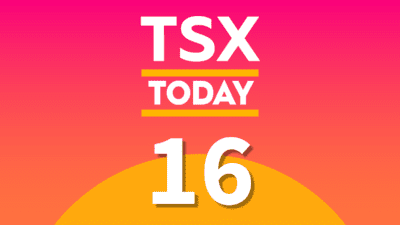It would be hard to find better dividend payers than Toronto-Dominion Bank (TSX:TD)(NYSE:TD) and Royal Bank of Canada (TSX:RY)(NYSE:RY) over the past 15-20 years. Not only did neither bank cut their dividends during the crash in 2008, but they have shown median annual dividend growth of 12% and 13%, respectively, since 2003.
In fact, since 2000, Royal Bank has only had three years when it didn’t grow its dividend by double digits (2008, 2010, and 2011), and TD has only had four years without double-digit growth (but unlike RBC, TD actually boosted its dividend in 2009 during the middle of the market turmoil).
These banks have performed similarly on the dividend front, but increasing headwinds for Canadian banks coupled with strategic differences between the banks are setting TD up for faster dividend growth going forward.
TD has slightly better earnings-growth prospects and more upside
What is the number one driver of dividend growth? Earnings growth. If two companies maintain a similar payout ratio, the company with the higher earnings growth will post higher dividend growth. According to most estimates, TD Bank has an edge in this area.
For 2015, consensus earnings estimates are giving TD a slight edge over RBC, with 7.4% growth year over year compared with 6.9% for RBC. Going into 2016, TD maintains its edge with 5% growth compared with 4.3% for RBC.
These may seem like fairly slight differences, and they are (although some analysts are predicting a much bigger growth advantage for TD), TD’s key advantage is that it has more potential upside to its earnings growth than RBC.
The reason is because of the bank’s large U.S. retail exposure. About 28% of TD’s revenues come from its U.S. retail segment, whereas RBC’s U.S. and Caribbean Retail segments combined only produce about 6.5% of revenues.
RBC recently acquired U.S. bank City National, which should add $250-300 million to U.S. earnings next year. Its exposure still pales in comparison to the $3 billion or so that TD’s U.S. retail segment is expected to earn next year.
Why is this important to the dividend? Because TD’s large U.S. retail exposure gives it more leverage to upcoming U.S. interest rate hikes (which are expected to happen before Canada’s), which in turn means that TD’s earnings-growth and dividend-growth estimates could increase.
TD is particularly sensitive to an increase in rates. In 2013 the bank started selling off longer duration securities in its U.S. portfolio and replacing them with shorter duration securities. When interest rates rise, these securities will reprice at higher rates more quickly (because of their shorter terms), which will allow TD to benefit from a boost in rates.
In addition, TD also has the highest proportion of transactional accounts (chequing and saving accounts) of the big banks. These types of deposits are known as “sticky deposits” because banks typically do not need to raise rates on these deposits as much to keep them at the bank. As interest rates rise, TD will benefit from higher rates on its loans and investments without needing to increase rates proportionately on its low and no-cost deposits. The result is more earnings.
TD also has less downside risk to its earnings
Canadian banks currently have major headwinds coming from both the oil sector and the overvalued housing market. TD is less exposed to both of these risks than RBC.
Only 38% of TD’s loans are domestic mortgages, and 69% of these mortgages are insured by the CMHC. RBC has half of its loans as domestic mortgages, and only 45% of those are insured. This means if housing values drop substantially, TD is much less at risk of having to write down the value of its assets.
Further weakening of oil prices can also hurt bank earnings, since banks need to charge against earnings for potential loan losses, which would increase as prices stay low. Fortunately, only 0.75% of TD’s loans are commercial energy loans compared with 2.75% for RBC, and TD is also much less exposed to Alberta.
For TD, less downside risk to earnings means less risk to dividend growth.







